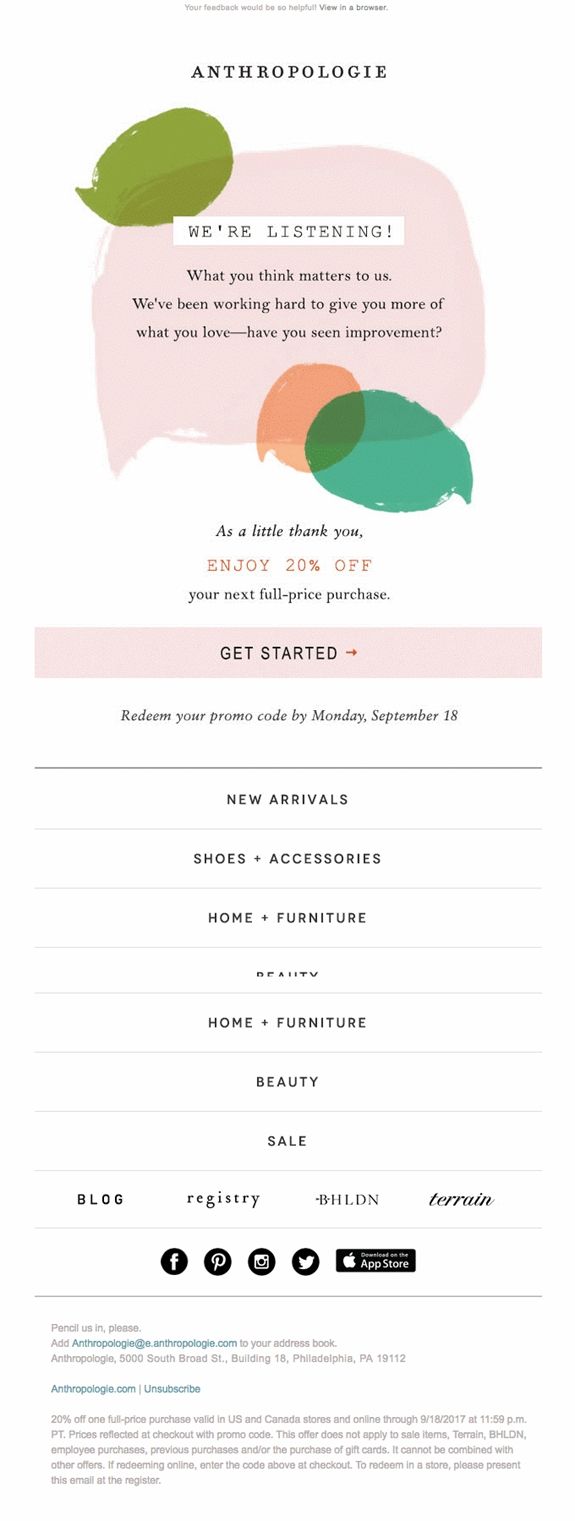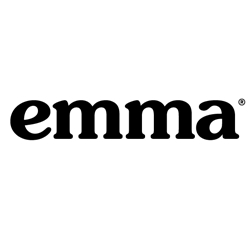You haven't heard from them in a while, they don't respond to your messages the way they used to, and you're beginning to wonder whether there's someone else in the picture.
Is this a break-up?
Though it may seem dramatic to say so, inactive subscribers can leave you just as lost and confused as an old romantic flame.
Similar to a great first date, your subscribers are usually the most excited about your brand when they first sign up to receive your emails. After that, it's your job to keep the relationship going strong.
But if you feel as if you're sending your very best content and your engagement is still flopping, don't give up. More than likely, it's not you, it's them. Sometimes, you just have to remind your subscribers of the good thing you had going; and, if they still aren't interested, remove them from your list!
That's why the art of the re-engagement email is so important.
Baby Come Back: How Desperate Are You?
Some marketers like to wash their hands of inactive subscribers or customers, saying they don't want to waste effort on convincing customers to return when they could spend it on new customers who don't require as much attention.
Sure, standing outside of your customers' windows with a boombox is a little too much, but that's not what a re-engagement campaign should be. The key to increasing engagement isn't in the convincing, but in the listening.
So let's reframe this campaign for what it truly is: You're not looking for a sale out of desperation; you're looking for a human connection and better understanding.
Once you realign with your subscribers, you can move forward—one way or another: potentially a sale, but also an unsubscribe if you conclude your product isn't the best fit for them right now. You can consider either response a win because both take you another step closer to refining your message, understanding your audience, and finding your target audience.
Re-Engagement Email Campaigns 101
Now that you've established your goal of the campaign—to gain information and understanding—you're ready to think about your actual plan and its execution. We'll cover the basics together, but, as always, put your customer relationships first and do what feels most natural.
Who Are You Sending To?
The art of sending a successful re-engagement email begins with your email list. At this point, you'll ask and answer questions like these:
- What level of inactivity will trigger a re-engagement email?
- What is the action I hope my subscribers will take?
- Which step in the customer lifecycle is the best time to re-engage?
Though strategies will vary based on audience and brand, here are a few variables that can generally be considered for a re-engagement campaign.
Behavior Inside and Outside the Inbox
It's easy to assume that low click and open rates mean that a subscriber is disengaged with your brand altogether. However, there's a lot of behavior outside the inbox that should be taken into consideration, too, such as website clicks and purchase history.
Do as much research as you can to pinpoint activity drop-off: Are customers visiting your website but then bouncing? Are they adding products to their cart and forgetting them? Are they opening your emails but not taking any further action?
Those are all important indicators, kind of like the "Check Engine" light going off, telling you to refine your messaging or strategy.
Dating app Hinge does a great job of sending clickable notifications to users' inboxes:

Image source: Really Good Emails
Customer Lifecycle
The customer journey is different for every brand, but no one knows it better than a business marketer who is consistently engaging with subscribers, asking them what's working and finding out what could be improved.
You'll want to take your customer life cycle into consideration when considering retargeting, because, depending on your brand, you may want to engage as soon as possible, or there may be a better payoff for waiting.
Learn what's normal for your customers, and put it to work for you.
Frequency
Customer engagement can fluctuate depending on your send activity. Maybe you're sending too much, or not enough. Maybe you should try sending in the morning instead of at night, or vice versa.
Before you send a re-engagement campaign, ramp up your A/B-testing to learn as much as you can about optimal send times. Then, you can make sure you're really giving your subscribers the best opportunity to re-engage.
What Are You Sending?
Behind every well-designed and beautifully written re-engagement email is a nervous marketer shouting, "PLEASE, HELP ME OUT JUST THIS ONE TIME!" Driving sales and increasing numbers is important, but think of this as a long game. Be patient. Remain intentional.
1. Add value
Don't just check in with your subscribers—give them something valuable. That could be a coupon code, a relevant blog post, or an interesting new case study... just make sure to not show up to their inboxes empty-handed! Let them know that you understand their needs and that you are out to offer solutions. And don't forget to create a really catchy subject line.
2. Reinforce your brand
Inactive subscribers are not unfamiliar with your brand. After all, they did display enough initial interest to sign up for your emails. So this is where things can get a little tricky from a content perspective: You don't want to act like you're being introduced for the first time, but you do want to show off a side of your brand they may have initially missed. But, while you do that, you also want to stay true to your original brand perception.
For example, if you're marketing for a women's clothing boutique, you definitely don't want to send an email that says you're now selling swimming pools. However, you could talk about a local nonprofit you're working with that helps to provide clothing for women all over the world.
3. Don't be afraid to ask questions
You might be afraid to know why your subscribers haven't been engaging with your content, but, trust us, ignorance is far from bliss. When you take the time to ask for a check-in and see how your customers are doing, you're given the opportunity to address any concerns and emphasize any positive feedback. Personalization matters a lot here, too.
One of our deepest human needs is to be heard and understood, so even if you hear and understand that your product may not be a great fit for a customer right now, lending a listening ear earns you a positive reputation.
See how Anthropologie asks questions and offers a discount code:

Image source: Really Good Emails
4. Put the relationship first
Honesty is always the best policy, especially in marketing. Don't look to your campaign with the goal of shoving new information down customers' throats that may or may not address their needs. That's almost a surefire way to get yourself kicked out of their inboxes for good.
See how Snap Kitchen shows customers that it's really listening:

Image source: Really Good Emails
Instead, using the information you gained from subscriber feedback, position yourself from a relationship stance instead of a sales stance. Sales are temporary, but real connections are what re-engage customers and sustain their brand loyalty for life.
Wrap-Up
If you've gained anything from this article, we hope it's along the lines of "stay human" and "don't stress." You've been cultivating relationships all your life, most of them just don't have fancy labels like "re-engagement campaign." Consider this effort a little bit more like reaching out to a friend who you haven't seen in a while: You already have everything you need to do this in real life, and with a few small tweaks you'll be doing the same digitally in no time. Happy re-engaging!




